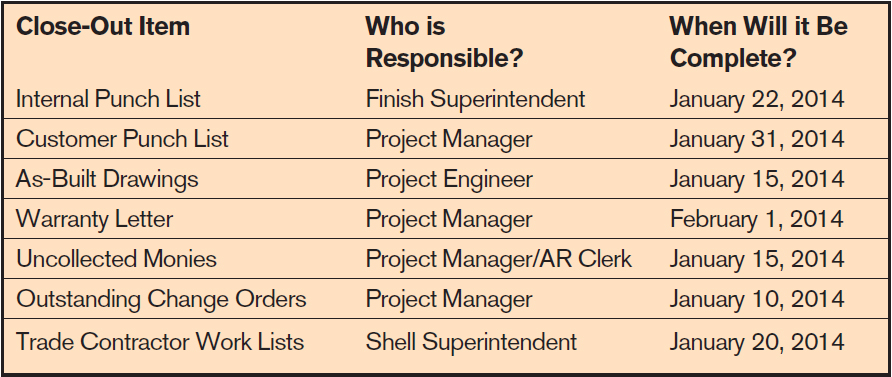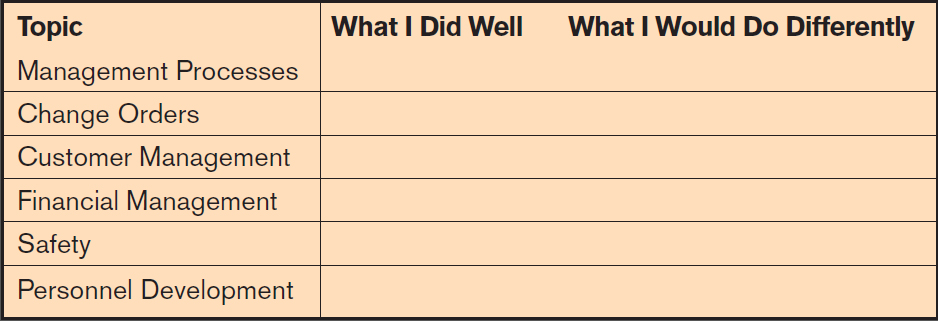
Seconds remain as the clock ticks away. A steady rain pounds the field, muddying any sense of progress and fatiguing weary players. The last play will define the game.
This dramatic scene unfolds at professional and collegiate football fields every autumn. Defined by some as “choreographed brutality,” football captivates audiences with its physicality and competitive spirit. Not open to debate is the sport’s standing as one of the greatest business enterprises.
Interestingly, the average football game lasts just 11 to 13 minutes. Actual game play accounts for only a small portion of the time the teams occupy the field, but preparation for the game begins long before the coin toss. In the weeks leading up to a game, coaches and players draft plays, screen game film and run drills. By the start of the game, coaches and players have invested hundreds, perhaps thousands, of hours in planning for a mere 12 minutes of football. Football has morphed from a simple game of short duration into a multi-billion dollar business enterprise in which the teams that plan and prepare the best win.
So, why do construction firms not follow this same principle? Many construction contractors fail to do a fraction of the planning that football teams do in order to reach the desired outcome. Planning in football is not radically different from the planning that should take place on construction projects. The difference lies in the results. The razor-thin margins or losses that construction firms yield through poor planning and execution compares poorly to organized football’s profitability. Proactive planning and communication are the fundamental building blocks of construction projects, just as great blocking and tackling make the difference in football.
Days Before the Game
Playing the game is always more fun than talking about it. However, games are won and lost in the preparation. Pre-job planning in construction is about briefing the team and calculating the course to victory. Many project managers, superintendents and foremen are not privy to the specifics of how a job is won. The handoff tends to resemble an informal “by the way,” rather than the formal discussion necessary to prepare the team to hit the field. Even before the project kicks off, the clock is ticking. Yet, productivity is forsaken for activity and having bodies in motion on the field. Coaches in professional football never walk onto the field on Sunday and tell the quarterback, “Here’s your playbook. Now go out there and win!” As absurd as this sounds, contractors do this daily.

Successful pre-job planning consists of at least two of these three phases:
Phase One – The Homework
- “Project Management Preparation”
- Review the plans.
- Review the proposal and scope letter.
- Develop management’s “plan of attack.”
Phase Two – Estimator/Management Turnover
- “Handoff to Management”
- Strategy of the bid
- Budget review
- Strategy to profit
- Sales promises
- Interpretations and calculations
- Project buyout
Phase Three – Management/Field Turnover
- “Handoff to the Field”
- Mobilization strategy
- Exit strategy
- Resource management plan
- Personnel development
- Customer management plan
In most cases, estimators are given far too little time to create a plan and budget for far too much work. The estimates are the foundation on which the project is constructed. When a project fails to meet expectations, estimators become the target of blame. Each step in the planning process formalizes the transition from the “get work” team to the “do work” team and generates buy-in for how the work was won in the first place. You and your team can deal with busts in the budget early and develop tactics to maximize budget gains. In doing so, the organization creates a sense of project ownership and eliminates finger-pointing.
Halftime, Timeouts and Station Breaks
Planning doesn’t end after the initial kick-off. Coaches and teams often “script” their first 25 plays or two to three possessions. Initial plans are effective to a point, but coaches and players alike understand that entering the game with a plan is only one piece of the puzzle. Often, a great offensive plan rarely measures up when it meets the defense it was designed to defeat.
Consider the 2007 Super Bowl. A game of two teams of superstars and weeks of planning were met with swirling winds and rain in the not-so-sunny Miami, Fla. Does this mean the planning was ineffective and a waste of time? No. In fact, the planning provided a basis for the game plan and a list of options or contingency plans. How often do construction firms develop such contingency plans? Projects are riddled with unknowns. Poor weather, poor designs, late deliveries and labor shortages are typical challenges facing the average contractor; however, contractors often deal with them in a reactive manner, as if it is the first time they have encountered such a hardship.
Planning continues long into the game. Player and scheme substitutions occur as the action dictates. Tactics are shifted as feedback is received from the front lines. The field general, linebacker or quarterback maintains a constant dialogue with the coaches, adjusting to the variables on the field. Superintendents and foremen should engage in a similar short-interval planning process. Weekly or biweekly planning is essential. A short interval plan, including projected labor resources, material needs and equipment utilization at a minimum, allows the field manager to forecast needs and manage concerns. A “best-of-class” short-interval plan should also include customer concerns, design concerns, trade contractor concerns, material and equipment lists and labor resource needs.
Many managers confuse scheduling and planning. A three-week look-ahead schedule generated through sophisticated scheduling software is not a substitution for planning. Through the planning process, superintendents and foremen prepare to achieve this schedule and expose what could inhibit their ability to do so. Project managers use this tool as their priority list for the current week to keep their crews moving in a positive direction.
Calling Plays
How do all of the players know what to do at the snap of the ball? While the ultimate goal of scoring is paramount, individual plays are called during the 25 seconds between each play. Each player has a designated responsibility and goal for that next series. No confusion, no wasted motion.
Construction crews often begin their days without knowledge of what they are building or a definitive goal. The lack of a quantitative goal hinders not only their performance but also the overall project performance. The first five minutes of each day should be dedicated to focusing the crew on the goal for the day: four hundred linear feet of pipe, 20,000 square feet of pavement, 2,000 tons of asphalt, etc. A quality daily huddle should also include safety concerns and hazards, material needs and impediments to daily production.
The goal of the day should be visible and easily recalled for everyone. Road builders can use cones to represent the goal line for the day or week. Other contractors can write the goal on a dry-erase board attached to the toolbox. At the end of the day, the superintendent should indicate actual performance so the crew can compare their progress to the goal. For all contractors, the crew has the ability to make or lose money. Similarly, points are not scored in the booth or on the sideline, but points depend on how the booth or sideline supports the players on the field.
Two-Minute Warning
With two minutes remaining in the game, a second- or third-string player replaces the quarterback. This new player has not seen the playbook, nor has he had the benefit of even watching the game from the sidelines. This is similar to the many project teams that stall as they cross the finish line, simply fumbling the ball as they break the plane. When many projects hit the 90-percent-complete mark, progress begins to sputter. Field managers shift to bigger projects. Long schedules take their toll on crews and teams. The remaining 10 percent of the project often costs an additional 20 to 25 percent more than the budget.
The challenge is ensuring that the team finishes the project with the same gusto with which they began. A contractor’s exit strategy is the tool to prevent this fourth-quarter letdown. For many organizations, the time for an exit strategy is at approximately 80 to 90 percent complete. When determining the right time for this tool, organizations should examine the point where a project’s progress becomes stagnant or where margin erosion historically takes place. A firm’s exit strategy is simply the pre-job planning meeting for the end of the project. At a minimum, the exit strategy should include the items as detailed in Exhibit 1.
 Exhibit 1
Exhibit 1Customers may never remember the fumbled kickoff or the botched pour early in the project, but make no mistake—customers remember how contractors finish. The end of the project also represents the final payment and retention collection. Unapproved change orders, endless punch lists and incomplete closeout documents muddy the water and prevent the financial closure. Waiting until the end of project to settle change orders is like the 300-pound lineman sacking the quarterback with no time left on the clock.
The Locker Room Speech
Reporters shove microphones in the face of exhausted players. What went wrong? What went right? Four quarters of football are dissected to understand the successes and shortcomings. While most construction projects are not recorded (and thankfully not on national television), examining the project’s successes and shortcomings is essential. A post-job review provides lessons for both the project team and the entire organization. However, many organizations use this opportunity to simply evaluate the losing projects. Consider the message sent to the organization when the only time a post-job review occurs is on a project deemed a failure. Celebrating success is just as important as reflecting on what went wrong.
Post-job reviews must avoid the blame game. Targeting the shortcomings of the superintendent and pouncing on all the estimating errors and omissions is easy. While some of these observations may have merit, the organization is better served to engage in an introspective analysis of the project. For example, “What could I, as the estimator, have done differently?” Or, “As the superintendent, what would I characterize as my greatest success?” This analysis is more constructive and enables dialogue to focus on issues rather than individuals crafting a defense strategy against an inquisition. Exhibit 2 identifies some of the critical items that should be a part of an organization’s post-job review.
 Exhibit 2
Exhibit 2Closure is another intangible result of the post-job review. Consider a game in which the players never know the final score or the statistics that define their performance. Each game is played with no knowledge of the outcome. Once again, contractors finish jobs every day and never inform the front-line managers and superintendents of whether they won or lost the game. Feedback can be as simple as a final summary of the project’s conditions by comparing estimated costs/margin to actual costs/margin.
The final component of the post-job review is sharing the lessons learned with the rest of the organization via an inter-company memo, shared drive or talking point at a company meeting.
Scores of players on losing teams bemoan their inability to execute the plan. Thousands of construction companies on losing projects complain about the lousy customer, poor weather and lost margins but never recognize opportunities lost in their poor planning. Locker room finger-pointing has no place in football and construction management. Construction planning may never yield shining silver trophies, but consistent, standardized planning does have the ability to dramatically improve profit margins.
